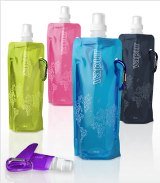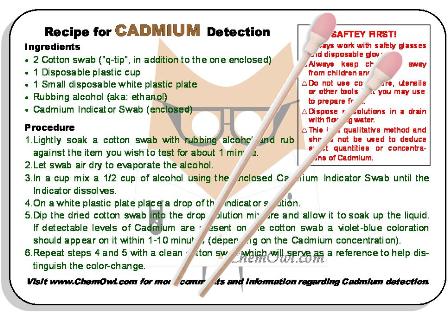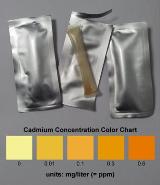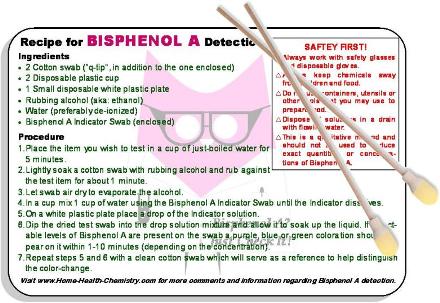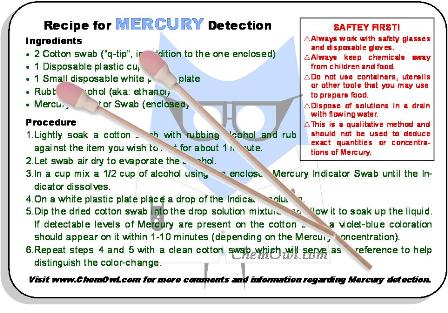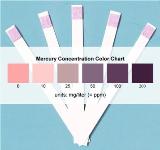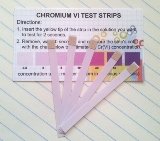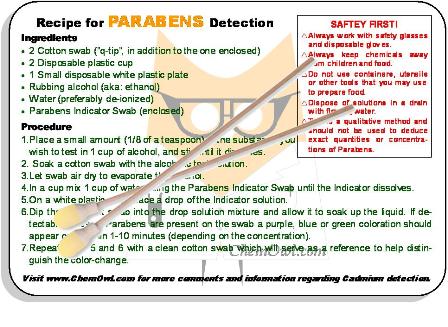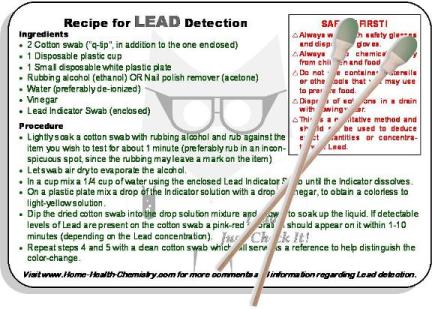LEAD DETECTION RECIPE

Lead can be found in house paint, children's toys, drinking water and in other places around your home - want to find out more?
Click here to find out why Lead detection is important and about the hazards of Lead in your home.
Ingredients
1 Cotton swab (“q-tip”)
1 Disposable plastic cup
1 Small disposable white plastic plate
Rubbing alcohol (a.k.a.: ethanol) OR Nail polish remover (a.k.a.: acetone)
Water (preferably de-ionized)
Vinegar
Lead Indicator: Sodium rhodizonate
(can be purchased here)
Lead Detection Procedure
1. Lightly soak a cotton swab with rubbing alcohol and rub against the item you wish to test for about 1 minute.
2. Let swab air dry to evaporate the alcohol.
3. In a cup mix the small pinch of Lead Indicator with a ¼ cup of water. Label this solution – “Indicator”.
4. On a white plastic plate mix a drop of the Indicator solution with a drop of vinegar. The resulting drop solution mixture should be colorless to yellow.
5. Dip the dried swab into the drop solution mixture and allow it to soak up the liquid. If Lead is
present on the swab a pink-red coloration should appear on it within 1-10 minutes (depending on the Lead concentration).
6. Repeat steps 4 and 5 with a clean (untreated) swab which will serve as a reference to help distinguish the color-change.
Comments About Lead Inspection
• The Indicator solution must be prepared fresh and lasts for only 6 hours.
• The drop solution mixture is best used up to 5 minutes after mixing.
• This method is qualitative and able to detect Lead content down to 0.1%.
• When testing several items, be sure to check each individual surface with separate swabs and drop solution mixtures in order to avoid cross-contamination of the results.
• If Lead is detected it is advised that you limit your exposure and contact a professional.
• This screening procedure is based upon US National Institute for Occupational Safety and Health (NIOSH) analytical method #9105.
• Excess amounts of tin may interfere with the test (relevant when testing solder).
Lead Testing Safety
• Always work with safety glasses and disposable gloves.
• Always keep chemicals away from children and food.
• Do not use containers, utensils or other tools that you may use to prepare food.
• Dispose of solutions in a drain with flowing water.
TRY OUR TEST KITS FOR ONLY $29.99! each
with FREE SHIPPING
Cadmium Test Swabs
Cadmium Test Tubes with Color Chart
BPA Test Swabs
Mercury Test Swabs
Mercury Test Strips with Color Chart
Hexavalent Chromium Test Strips with Color Chart
Parabens Test Swabs
Lead Test Swabs
Buy 2 Or More Test Kits
Get a FREE
BPA-Free Foldable Bottle
